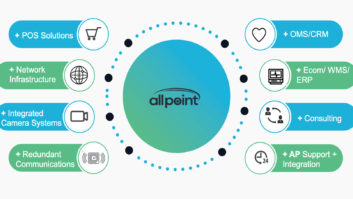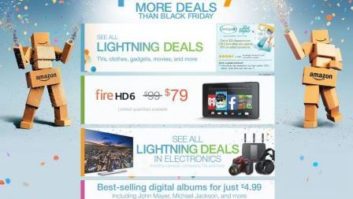If your business is sales, inventory is the hub. Too little, and you miss out on potential sales. Too much, and you’re wasting money by paying to house excess goods. And while most people understand the importance of managing inventory, getting it right takes the right tools. Keeping track of inventory with a pen and paper or with an Excel spreadsheet just won’t cut it — and it doesn’t need to. There are more effective ways of tracking your inventory demands that, when correctly implemented, can increase turn rates and profits.
Easy access to information on your best- and worst-selling items, items with the greatest return on investment, and a complete sales analysis, will allow you to manage inventory as accurately and efficiently as possible. Access to this data ensures that you do not have an improper amount of assets tied up in inventory, as well as making sure that you do not miss sales opportunities because you are poorly stocked.
The Dangers of Overstock
One of the biggest mistakes retailers make is overstocking items. Excess inventory is essentially your money sitting on a shelf. It can be tempting to buy twice the amount of one item to cut the cost, but ultimately, those extra items are costing you money. Excess inventory involves all sorts of hidden costs; it must be regularly counted by people (whom you are paying), insured, stored and moved to make room for new inventory, not to mention the space it might be taking up on the store floor.
Overstocking also leads to decreased inventory turns, which is the number of times per year that your inventory is replaced. Your goal is to maximize these inventory turns, thus increasing your profit and outperforming your competitors. Inventory that turns quickly has typically been well thought out and takes past sales data into consideration.
Buying in smaller quantities, more frequently (as opposed to one large order at the beginning of a season) can help you increase turns. If a customer comes in once a month, and each month finds new merchandise, it will entice them to keep coming back. Customers notice when there is a small quantity of items and it brings a sense of immediacy to their purchasing decision – if they don’t buy this dress now, it might not be here next week. Alternately, if they see the same merchandise on the shelves for three months, they may hold off on buying anything in hopes of seeing it on a markdown rack next time they come in. When you buy in smaller quantities, you will have the capital needed to bring new merchandise in since your money won’t be tied up in excess inventory.
Analyze Past Orders to Determine Pricing
A good software system will track your orders and sales, week over week, month over month and year over year, and will provide detailed reports on trends. When gearing up for a new season, it is important to sit down and carefully dissect the information these reports provide. Which items were best sellers and which ones never left the shelf? What brands were customers most excited about? What types of items sold the best at different times of the year — did you notice that people are buying swimsuits in March in advance of spring break or that fall wear is a best seller in early August? If you have an e-commerce site, you should also pay attention to feedback from your customers about what products are most popular, what they’d like to see in your store, and which items they have found disappointing.
With this powerful data in hand, you can not only make informed decisions about when to order what items, and in what quantity, but can also determine the best pricing structure for your merchandise. Pricing is about more than the cost of wholesale items; it is about the perceived value of an item. People pay hundreds of dollars for designer jeans, but would never consider spending the same amount on a knockoff pair. And it’s not because those designer jeans are more expensive to make. Pricing an item too low can take away from the brand value by cheapening the product, while pricing it too high can deter a customer from making a purchase if they feel it’s overpriced. Ultimately, pricing is an estimate of what the customer is willing to spend, and based on previous sales, you will be able to more accurately decide what items to sell for more and which products need a price cut.
Create Space for Profitable Products by Liquidating Stagnant Stock
Every business owner has made mistakes, and most retailers have made the mistake of purchasing items that never sell and sit on the shelves for months. Unfortunately, there will probably be times when the item you thought would be trending this winter falls flat and you find yourself with unwanted merchandise. Slow-moving inventory can become dated very quickly and will prevent you from rotating popular items into your store.
Once you recognize you have an item that isn’t moving, the best option is to commit to selling the merchandise as quickly as possible. You have a couple of routes you can take to get the merchandise out the door. A special sale can be profitable if done right, or at a minimum can free up space in your store for other products. Try to be creative when marketing the sale – words like “clearance” and “close out” can take away from the value of the product. You can try staging sales around unconventional holidays, like “Geek Pride Day” or “Mean Girls Appreciation Day,” which might spark interest in customers who would otherwise ignore the familiar “Sale” sign.
When pricing your sale items, you’ll want to make as much of your initial investment back. However, there may be instances when this isn’t an option. In this case, price to sell, and if that still isn’t moving the merchandise, you can always donate the goods to a local charity. Even though you will have lost your investment, your shelves are now free to stock things your customers actually want to buy.
Inventory management is the cornerstone of a successful business. If you don’t have the product a customer wants, when they want it, they will go elsewhere to find the product, and they may never return to your store. By using the data your software provides, you can keep the appropriate quantity of merchandise in your store, improving the number of turns your business sees each year, and dramatically affecting profits. Pricing correctly and liquidating unwanted items will keep your store stocked full of the items your customers want to buy. By stepping back and looking at all the information available to them, retailers can cut costs and make their stores as profitable as possible.
Jason Becker is COO of RICS Software.












